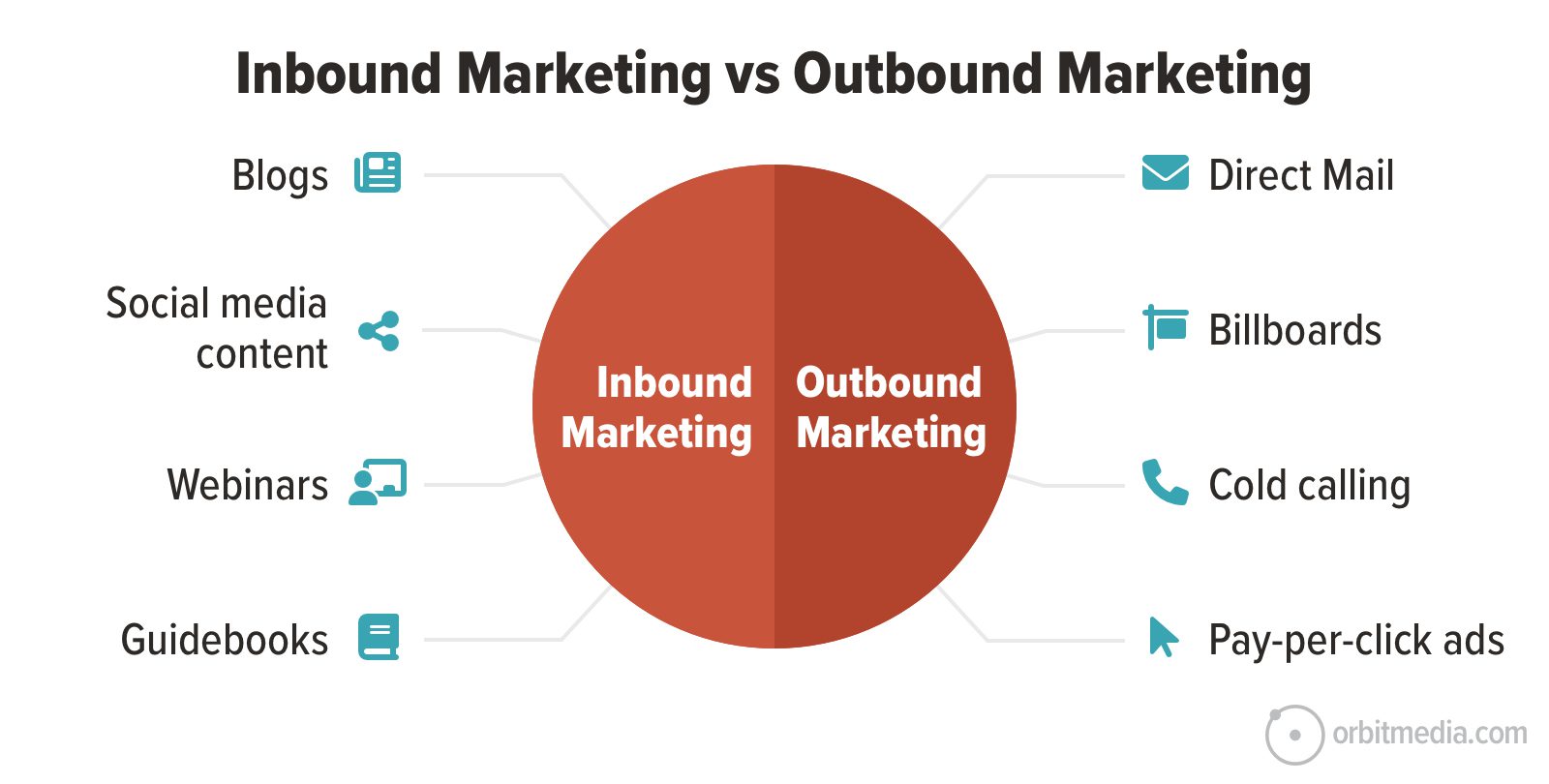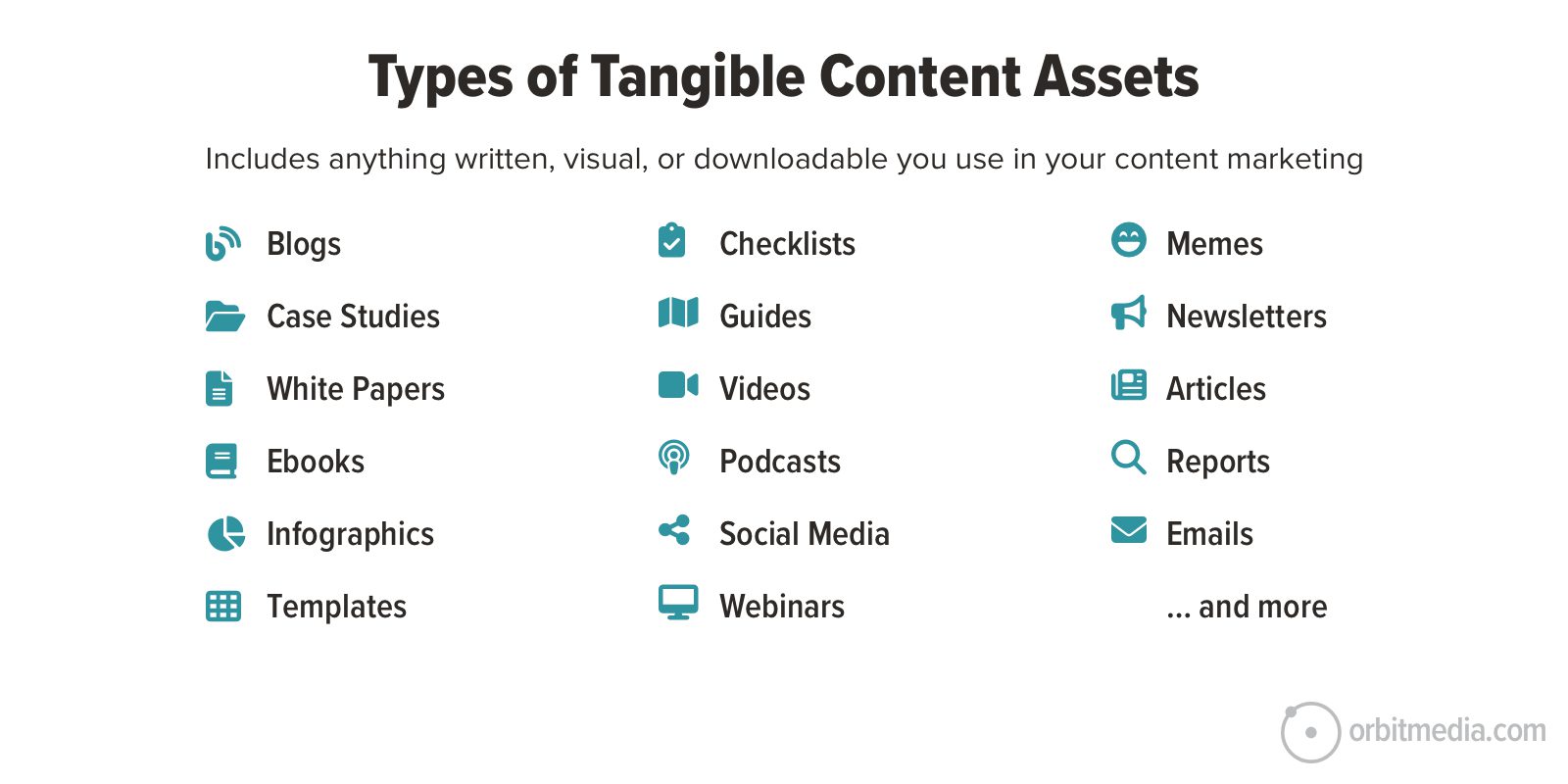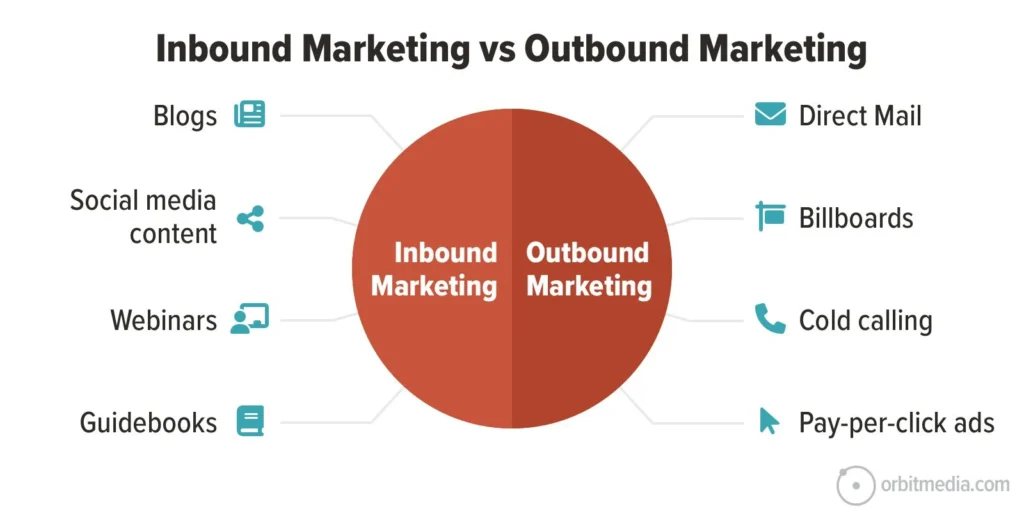Is your organization due for an advertising revamp? Maybe you’re setting formidable lead generation or sales targets this month or quarter. Irrespective of the exact objective, having a clear plan for both inbound and outbound marketing can help you achieve it. Let’s explore these two strategies, how they differ, and determine which is best for your business.
Inbound vs. Outbound Marketing: Key Differences
Both inbound and outbound marketing aim to attract and convert leads, but they differ fundamentally in their approach. Outbound marketing uses traditional, often broad-reaching techniques like ads, cold calls, and emails to capture interest. In contrast, inbound marketing is designed to attract those who are already searching for solutions like yours, drawing them in with valuable, helpful content.
Outbound strategies are proactive, reaching out directly to a wide audience in the hope of converting some. Meanwhile, inbound marketing takes a more refined approach by addressing the needs of people actively looking for information or resources in your field, building trust and brand credibility over time.
(*5*) Image source: ORBITMEDIA.COM[/caption]
Image source: ORBITMEDIA.COM[/caption]
Essentials of Inbound Marketing
Inbound marketing focuses on attracting customers by addressing their needs and answering their questions. Centered around content marketing, it positions your brand as a go-to resource in your industry. With a combination of search engine optimization (SEO), engaging content, and lead capture strategies, inbound marketing drives quality traffic and keeps potential customers interested.
1. Attract, Engage, Delight
The core of inbound marketing lies in the “Attract, Engage, Delight” framework. This strategy helps build long-term relationships with your leads.
- Attract: This first step is all about brand visibility. Using SEO and social media, you can drive new visitors to your website by providing answers to their questions and resources they need.
- Engage: Capturing interest is just the start; engaging with your audience builds trust. Provide content that resonates with their needs, encouraging them to connect further by filling out forms, surveys, or downloading resources. This data helps personalize their experience and moves them closer to a decision.
- Delight: The final stage is where loyalty is built. Provide exceptional customer experiences, gather feedback, and address any issues promptly. If people have a positive experience with your brand, they’re more likely to return — and recommend you to others.
2. Create Quality Content
Content is at the heart of inbound marketing. Sharing valuable insights through blogs, articles, videos, podcasts, and webinars helps build brand authority and create a sense of trust with your audience.
A strong content plan considers SEO best practices, addresses common search queries in your industry, and uses personalization to guide customers along their journey. Thoughtful, well-researched content tailored to specific buyer personas will position your brand as an industry leader and ensure potential buyers turn to you when ready to make a purchase.

3. Nurture Leads
Attracting visitors is an important start, but nurturing those leads until they’re ready to buy is essential. Use personalized content, automated nurturing sequences, and lead scoring to keep potential customers engaged and identify those with the highest conversion potential.
- Targeted Content: By segmenting your leads and understanding their specific goals, pain points, and interests, you can create tailored content that directly addresses their needs, whether through targeted blog posts, guides, or even email newsletters.
- Marketing Automation: Automate repetitive tasks like sending welcome emails, delivering follow-ups, and posting social media updates. Marketing automation allows you to stay engaged with leads without heavy time investment, freeing up resources for high-touch actions.
- Lead Scoring: By tracking conversion events, social interactions, and website activity, you can identify which leads are most likely to convert. This helps prioritize outreach and ensure that resources are used efficiently.
Supporting Outbound Marketing Efforts
Outbound marketing retains its place in the mix, especially when combined with digital channels. It’s still highly effective in some cases, particularly for:
- Building brand awareness quickly
- Reaching a broad audience
- Launching new products or services
4. Use Multiple Channels
It’s important to employ a mix of outbound channels to broaden your reach.
- Traditional Media: Use TV, radio, and print ads to expand reach across diverse audiences.
- Digital Advertising: Leverage online ads, such as paid search (PPC) or social ads, for more targeted engagement.
- Direct Outreach: Emails, cold calls, and direct mail can still be incredibly effective for building rapport with prospects and initiating conversations.
5. Leverage Automation Tools
Automation tools can simplify many outbound efforts, helping you stay organized and efficient.
- Set up A/B tests to optimize your ad spend.
- Use email drip campaigns to re-engage leads and promote ongoing conversions.
- Utilize social media scheduling platforms to maintain visibility and consistency in outreach.
6. Personalization
Personalized messaging helps cut through the noise in outbound marketing. By segmenting your audience and customizing your outreach, you can engage prospects in more meaningful ways.
- Segment leads based on key factors like demographics, location, and buying behavior.
- Craft tailored messages that appeal to their unique needs and challenges.
Balancing Inbound and Outbound Marketing
Both inbound and outbound marketing bring their own advantages. The best strategy is often a blend of the two. An integrated plan allows you to:
- Build trust and establish long-term relationships through valuable content
- Extend your reach and increase brand awareness rapidly through outbound campaigns
By combining inbound and outbound marketing, you can create a well-rounded strategy that attracts, engages, and converts leads while also expanding brand visibility.


